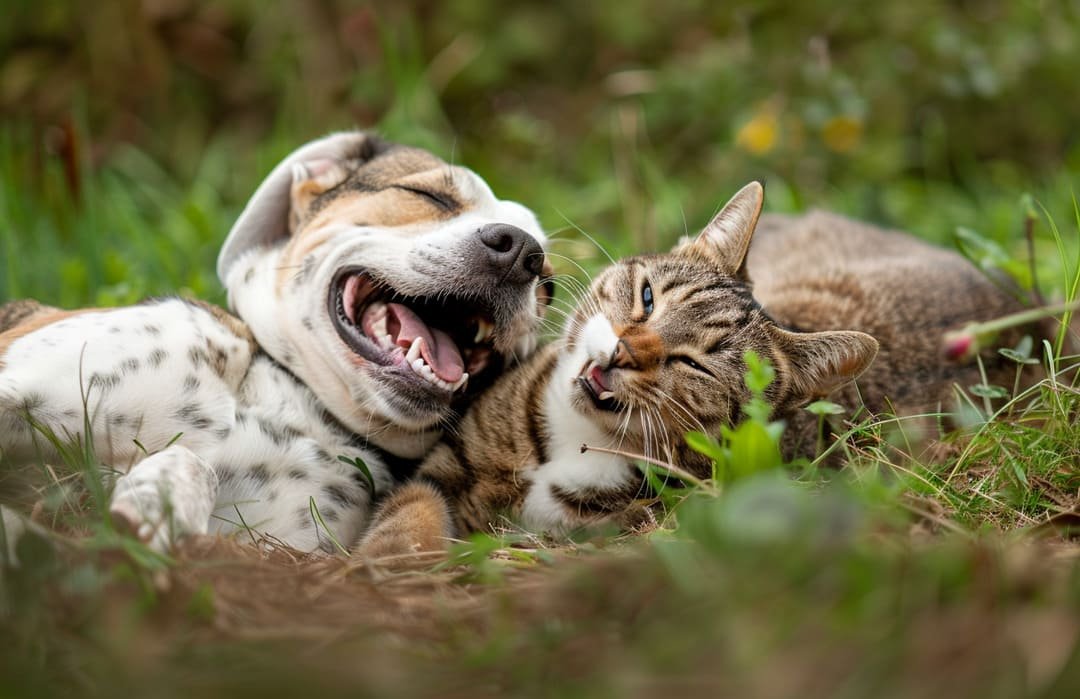Pet ownership responsibilities come with a great deal of love, joy, and companionship, but they also entail a significant commitment to providing proper care and attention to our beloved animal friends. From ensuring their health and safety to nurturing their well-being, being a responsible pet owner involves a range of essential duties that contribute to a fulfilling relationship with our pets. In this comprehensive guide, we will explore the fundamental aspects of pet ownership responsibilities and how they play a crucial role in the happiness and welfare of our furry companions. Let's embark on this journey together to discover the key practices and principles that define responsible pet ownership.
Understanding the Commitment of Pet Ownership
Defining Pet Ownership ResponsibilitiesAs a pet owner, you take on various responsibilities to ensure the well-being and happiness of your furry companion. These responsibilities encompass not only financial aspects but also emotional and time commitments.
Financial Responsibilities: Budgeting for Your Pet
-
Regular veterinary visits for check-ups and vaccinations
-
Quality food that meets your pet's nutritional needs
-
Grooming supplies and services
-
Unexpected medical emergencies or treatments
Time Commitment: Daily Care and Exercise Routine
-
Feeding your pet at regular intervals
-
Daily exercise to keep your pet healthy and active
-
Playtime and social interaction for mental stimulation
-
Training sessions to reinforce positive behavior
Emotional Responsibilities: Providing Love and Support
-
Building a strong bond through affection and attention
-
Recognizing signs of distress or illness and seeking appropriate care
-
Creating a safe and nurturing environment for your pet to thrive
-
Being patient and understanding during training and behavioral challenges
For more information on budgeting for your pet's needs, you can refer to resources provided by Petco.
Creating a Safe and Healthy Environment for Your Pet
Pet-Proofing Your Home: Tips and GuidelinesWhen bringing a new pet into your home, it's essential to ensure their safety by pet-proofing your living space. Some key tips include:
-
Securing cabinets and trash cans to prevent access to harmful substances
-
Removing toxic plants from indoor and outdoor areas
-
Keeping electrical cords out of reach to avoid chewing hazards
-
Using gates or barriers to restrict access to certain areas
Importance of Regular Vet Check-ups and VaccinationsRegular visits to the veterinarian are crucial for maintaining your pet's health and well-being. Key components of these visits include:
-
Routine vaccinations to prevent common diseases
-
Health screenings to detect any underlying issues early
-
Dental check-ups and cleanings for good oral hygiene
-
Parasite prevention and control measures
Nutrition: Choosing the Right Food for Your PetProper nutrition is vital for your pet's overall health and longevity. Consider the following factors when selecting food for your pet:
-
Age, breed, and size-specific dietary requirements
-
High-quality ingredients without unnecessary fillers or additives
-
Consultation with a veterinarian for personalized feeding recommendations
-
Monitoring your pet's weight and adjusting their diet as needed
Exercise and Mental Stimulation: Keeping Your Pet Active and HappyRegular exercise and mental stimulation are essential for your pet's physical and emotional well-being. Consider the following activities to keep your pet happy and healthy:
-
Daily walks, runs, or play sessions to meet their exercise needs
-
Interactive toys and puzzles to engage their mind
-
Training sessions to strengthen your bond and provide mental stimulation
-
Outdoor adventures and socialization opportunities for enrichment
For additional guidance on pet nutrition, you can explore resources provided by Chewy.
Training and Socialization for a Well-Behaved Pet
Basic Training Commands: Sit, Stay, Come, etc.Training your pet not only enhances their behavior but also strengthens the bond between you. Consider these key training commands:
-
Sit: Teaching your pet to sit on command is useful for obedience and control.
-
Stay: Training your pet to stay in place can prevent accidents and promote safety.
-
Come: Ensuring your pet responds to the "come" command can be crucial in emergency situations.
-
Leave it: Teaching your pet to leave objects or substances can prevent ingestion of harmful items.
Socializing Your Pet with Other Animals and PeopleProper socialization is essential for a well-adjusted pet that can interact positively with others. Here are some tips for socializing your pet:
-
Introduce your pet to different animals in controlled environments.
-
Expose your pet to various people, including adults, children, and strangers.
-
Use positive reinforcement and rewards to encourage friendly behavior.
-
Monitor interactions closely to ensure your pet feels comfortable and safe.
Addressing Behavioral Issues: Tips for Positive ReinforcementBehavioral issues can arise in pets, but they can often be addressed through positive reinforcement techniques. Consider the following tips:
-
Rewarding desirable behavior with treats, praise, or playtime.
-
Consistency in training and setting clear boundaries for your pet.
-
Seeking professional help from a trainer or behaviorist for complex issues.
-
Patience and understanding in correcting behavior without resorting to punishment.
Building a Strong Bond with Your Pet through TrainingTraining sessions not only teach commands but also foster a strong connection between you and your pet. Try these strategies to strengthen your bond:
-
Spend dedicated time each day on training exercises.
-
Use positive reinforcement to create a positive association with training.
-
Engage in activities that both you and your pet enjoy.
-
Celebrate small victories and progress in training sessions together.
Grooming and Hygiene Practices for Pet Well-being
Regular Grooming Routine: Bathing, Brushing, and Nail TrimmingGrooming plays a crucial role in keeping your pet healthy and comfortable. Follow these grooming practices for your pet's well-being:
-
Bathing: Use pet-friendly shampoos and avoid over-bathing to maintain natural oils.
-
Brushing: Regular brushing helps prevent mats and tangles in your pet's coat.
-
Nail Trimming: Keep your pet's nails trimmed to prevent overgrowth and potential injuries.
-
Ear Cleaning: Clean your pet's ears regularly to avoid infections and buildup.
Dental Care: Importance of Oral Hygiene for PetsMaintaining your pet's oral health is essential to prevent dental issues and overall well-being. Consider these dental care tips:
-
Consistent Teeth Brushing: Use pet-specific toothpaste and a soft brush for regular cleaning.
-
Dental Chews and Toys: Provide dental treats or toys to help reduce plaque and tartar buildup.
-
Professional Dental Cleanings: Schedule regular dental check-ups with your veterinarian.
-
Monitoring Oral Health: Look out for signs of dental problems such as bad breath or bleeding gums.
Recognizing Signs of Illness and Addressing Health Concerns PromptlyUnderstanding your pet's normal behavior and health indicators is crucial for early detection of illnesses. Be aware of these common signs of health issues:
-
Changes in Eating Habits: Loss of appetite or sudden weight loss.
-
Lethargy or Unusual Behavior: Decreased activity levels or excessive sleeping.
-
Vomiting or Diarrhea: Digestive issues that persist beyond a day.
-
Skin and Coat Changes: Hair loss, itchiness, or skin redness.
Ensuring Your Pet's Hygiene for a Healthy and Happy LifeMaintaining proper hygiene practices for your pet goes beyond grooming. Consider these additional tips to enhance your pet's well-being:
-
Regular flea and tick prevention to protect against parasites.
-
Proper waste disposal and cleaning of litter boxes or outdoor areas.
-
Safe and comfortable sleeping environments for quality rest.
-
Mental stimulation and enrichment to promote overall happiness and contentment.
FAQ Section
What financial responsibilities are associated with pet ownership?Pet ownership entails various financial commitments, including expenses for veterinary care, food, grooming supplies, toys, and potential unexpected medical emergencies. It is essential to budget and plan for these ongoing costs to provide the best care for your pet.
How can I create a safe environment for my pet at home?To ensure a safe environment for your pet, pet-proof your home by securing cabinets, removing toxic plants, keeping electrical cords out of reach, and using gates to restrict access to hazardous areas.
Why is regular grooming important for my pet's well-being?Regular grooming, including bathing, brushing, and nail trimming, is vital for your pet's health and comfort. It helps prevent matting, skin issues, and promotes a clean and healthy coat.
What are the benefits of training and socializing my pet?Training and socializing your pet contribute to their well-being by promoting good behavior, strengthening the bond between you and your pet, enhancing social skills, and reducing anxiety or aggression.
How can I maintain my pet's dental health?Maintaining your pet's dental health involves regular teeth brushing, providing dental chews or toys, scheduling professional cleanings, and monitoring for signs of dental problems like bad breath or gum issues.


